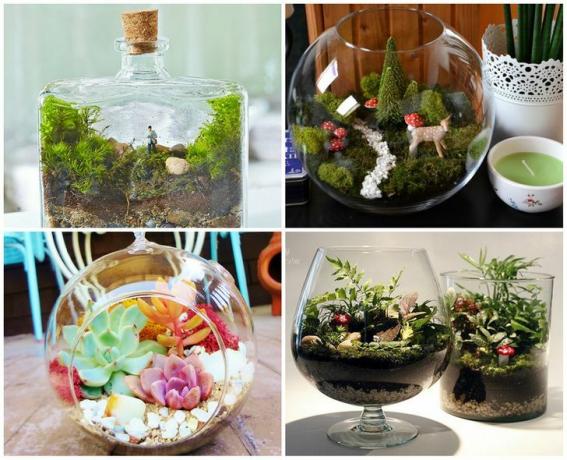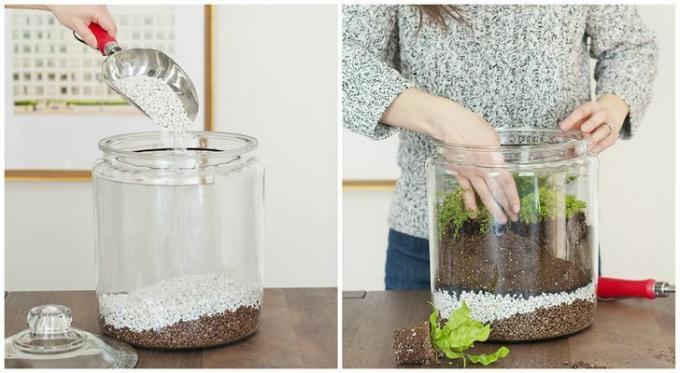
What is a terrarium? terrarium it is a self-sustaining mini-ecosystem, which does not need to be watered frequently.
The choice of species that will compose the terrarium is very important because they all need to have the same conditions for humidity and light.
see more
Biology teacher fired after class on XX and XY chromosomes;…
Cannabidiol found in common plant in Brazil brings new perspective…
The plants in a terrarium must be small, but try to mix plants of different sizes, with sheets of different sizes and colors to make your terrarium more attractive.
In shady places, prefer to make a terrarium with different foliage, but in brighter places, you can insert plants with flowers.
Terrariums can be of two types: closed and open. Check it out below!
On a closed terrarium, the glass does not have any openings and is used for plants that need a lot of humidity and shade, such as forests. Watering can take months to happen, he is a ecosystem self-sufficient.
mosses, anthuriums, phytonias and peace lilies are good options for the composition of closed terrariums, since they can adapt to internal environments, with indirect light.
O open terrarium, also called a mini garden, has an opening in the glass and requires more frequent watering, generally every 20 days.
To the succulents and the cacti are widely used in open terrariums and are plants that need little water a lot Sun light, therefore, they must be placed in well-lit places, but not exposed to direct sunlight, to avoid overheating.

1st step — Choose the glass container
Choosing the right glass is essential for setting up your terrarium. Most importantly, it needs to be deep enough for the roots can accommodate.
You can reuse a glass that you have at home or buy one according to your taste. Consider using aquariums, flower vases, teapots, lamps, bowls, bottles or jars.

2nd step — Choose the plants
The plants must be chosen according to the container in which you will place your terrarium. Remember that closed terrariums support plants that like a lot of moisture.
It is also important to only mix plants that have similar characteristics and that grow together in harmony.

In addition to the container and plants, you will also need:
1 — Cleaning
Thoroughly wash the container where the terrarium will be mounted and dry it.
2 — Drainage
Place the gravel, pebbles and activated charcoal in the bottom of the container.
3 — Drainage coverage
Place a layer of moss to hold the gravel and absorb excess moisture.
4 — Substrate
Place the soil, always observing the size of the container and the roots of the plants you will use. Generally, a layer of 5 to 8 cm of soil is sufficient.
Squeeze the earth a little, so that the air can escape, and make the holes where your plants will be positioned.

5 — Plants
Carefully add plants to prepared holes, fill soil around until they are supported.
6 — Decorations
Now that your plants are in place, place the ornaments very carefully.
7 — Watering
Put a small amount of water in the terrarium.
Close the lid, if it is a closed terrarium, and your mini garden is ready!

Remember that closed terrariums do not need watering, but open terrariums need minimal watering whenever the substrate is dry.
It is important to observe the health of the plants to avoid weeds, mold or diseased plants. If you notice any changes, immediately remove the plant from the terrarium.
Closed terrariums should be ventilated from time to time, especially when condensation drops form on the wall of the container.

See too:
